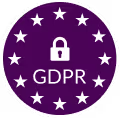How your company spends its learning and development dollars matters.
But often, picking the right L&D program can feel like a gamble instead of a smart investment. Some programs promise to reach every employee, but will every employee actually use them? Other programs promise impact and results, but managers have no visibility into development topics. Some programs don’t have any strategic business goals tied to programming, and no clear path or set structure connected to what employees will work on in their sessions.
Yet we know that each year, companies spend more than $340 billion on employee training and development, averaging more than $1,500 per employee.
But where is the return on investment?
Employee engagement is at a 10-year low. Addressing the skill gaps is currently the top priority for L&D departments everywhere. And despite massive investments in employee development, traditional, one-size-fits-all training programs are not working. Employees are not gaining the skills they need to grow at work.
Meeting employee development goals requires L&D programs that are carefully vetted, personalized, and implemented at scale. This is especially true for growth mindset companies, where a culture of learning is achieved through measures like continuous employee development projects.
To help HR leaders in the selection process, we’ve created this guide with an actionable framework for L&D program selection.
It all begins with a skills gap analysis, which many companies use as a standard, powerful tool. We’ll walk you through choosing the right program for the right skill; sourcing specific experts to teach those skills; and measuring the most relevant outcomes. We’ll even caution you on the steps that many companies fail to take, and explain why this error leads to wasted L&D initiatives.
Conducting a Strategic Skills Gap Analysis
How do you identify the performance gaps in your organization?
The first step in any L&D program is to analyze which skills are required for employee growth. This is a very complex process that requires understanding where your employee development goals stand today and where you want to go.
Like any personal or professional goal, you can’t figure out where you need to go if you don’t audit your current state. With some reflection, feedback, and analysis, you can pinpoint which skills your workforce lacks, and find a personalized L&D program that scales precise skill development for the skills identified across your teams.
Framework for Systematic Skills Assessment
Knowing exactly what types of training your employees will need in the future is like hitting a moving target (considering how skill requirements are constantly changing). But by taking the steps of a skills gap analysis framework, you can be optimally prepared.
First, review your set KPIs for each department or function, and check if employees are reaching them. For a soft skill evaluation, it can help to interview an employee’s customers and managers to get their feedback. When employees don’t meet KPIs, it’s time to figure out what skills would help them succeed.
3 Tools and Methodologies for Gap Identification
There are a variety of tools out there that can help you stay organized:
- A skills gap analysis template
- A skills matrix
- Skills taxonomy that breaks down main skills into skill elements (for example, communication might be spoken, written, or presentational)
Best Practices for Gathering Feedback
- Turn to your managers. Managers make a great starting point for gathering data on current employee skills. You can also look at old job postings for specific roles to see what abilities are relevant.
What you’ll end up with is an inventory that describes the skills that are present in the workforce, while the skills that are missing become the initial target list for L&D programs. - Ask your employees for ideas and recommendations. You should similarly assess employee development ideas. Workers are closest to the action, and may be the most reliable group. They can see new skill demands in their everyday tasks as they interact with clients and peers.
- Distribute a survey. Conducting employee satisfaction surveys – especially when they are anonymous or offer of a small token of appreciation – can deliver a wealth of information that you would not otherwise be aware of.
- Look to your peers. For anyone in the HR and the L&D space, you know your fellow HR colleagues are a wealth of knowledge. Ask around: what tools and programs are they using at their organization? What’s worked well? What hasn’t worked? Knowledge-sharing is so important and easier than ever, especially with LinkedIn groups, networking events, and informal chats at events.
Aligning Skill Needs with Business Strategy
Make sure to match strategic plans with the abilities of your people, as it will help in anticipating upcoming workplace skill requirements. This can also expose potential skill gaps as well as ‘potentials’ and ‘rising star’ employees if the company needs new leaders as part of a changed strategic direction.
Looking Towards the Future
As part of the process of future-state mapping, keep track of market and competitor trends through industry publications, speaking with colleagues at other organizations, and generally keeping your ears open for what’s been working for others. New techniques, technologies, and human resource concepts can lead to a shift in the hierarchy of hard and soft skills.
Understanding Your L&D Program Options
With a new record of employee skill gaps in hand, it’s now time to think about course options in terms of setting. An effective L&D program will deliver training in a way that optimizes skill acquisition, while still remaining practical in terms of resources. Here are the most popular and effective choices to consider:
- Internal mentoring programs, where individuals or small groups of employees meet with an experienced manager, often for an extended period. An internal mentor provides company-specific expertise and advice, and can be a long-term source of support. It’s critical, however, to find a mentor with the time, instructional skills, and personality for helping others.
- 1:1 precision skill development for personalized coaching, where the coach is an accredited professional. This is a good choice for senior managers and high-potentials who require close attention and rapid training – but it is also the most expensive.
- Workshops and group skill development for a number of employees who all have the same upskilling goals and availability. This is a good option when you need scalability; an experienced group training expert can handle a varying number of employees.
- Group skill development for cohort-based learning. Training for soft skills, in particular, benefits from the interactive dynamic of a group (which also results in cost-savings).
- Hybrid approaches and program combinations allow your teams to adjust according to availability and need. Experts should deliver courses that are designed for online use, and should be able to change their instructional method. An example would be a workshop leader who can also provide 1:1 coaching.
Finding and Vetting the Right L&D Partners
Whether you’re opting for coaches, mentors, or trainers, experts are a vital link in the value chain for delivering quality training. So, how do you pick an expert? Here are key considerations to guide your choice:
Expanded Criteria for Expert Selection
Personalized L&D cannot occur if you don’t have an expert for training in that specific skill. Your search must be based specifically on the granular skills that you identified during the skills gap analysis. For example, if your managers require upskilling in financial planning and strategy, don’t hire a general communications coach. Instead, look for an expert in finance.
Due Diligence Frameworks
Look for vetted experts and professionals so that you don’t have to do the investigating.
We know that finding the best instructors takes time — and outsourcing employee development should lighten your workload, not add to it. When sourcing experts for an L&D program, ask yourself these questions:
- How is the program evaluating and onboarding mentors, consultants, coaches, or experts?
- What expertise do experts have?
- What impact or measurement of success does the program have?
- What visibility do managers have in expert-led skill development?
At Growthspace, we have a network of over 2,500 vetted experts who each specialize in 3 skills. Our AI-matching platform pairs participants with experts who have a skills-first mindset, and not based on personality or shared interests.
Evaluate Platform Scalability
Especially at enterprise-wide organizations, your L&D program needs to scale. When working with LMS systems, you’ve probably encountered cumbersome, manual, and tedious programs that don’t accommodate your workflow. Here are some qualities to look for in your technological evaluation:
Flexibility – The platform should accommodate any number of employees and skills, which translates to a technology that has the bandwidth for hundreds of simultaneous users.
Adaptability – In light of the frequent change in workplace skills, you should be able to add and delete programs easily, including automated updates that cover lists of skills, course material, the expert database, etc.
Integration – It should be simple to combine your L&D technology with both public and private platforms. For instance, Growthspace connects to both MS Teams and Siemens’ internal systems.
Simple UI and interface – Considering that hundreds of users will be accessing the platform, including employees, managers, L&D staffers, and experts, you should look for a unified solution that requires minimal familiarization.
Ease of use and accessibility – Access to course material, schedules, evaluation records, and other vital programming aspects should not be limited to special software platforms, while optimized tablet and mobile functions are always a plus.
Quality Assurance Processes
When defining and delivering L&D, it is not enough to use best practices. Organizations must measure the performance of both the expert and the employee–because after all, the results are what count. There are numerous evaluation models to accomplish this. And you can always look at ROI and employee satisfaction levels as well.
L&D practitioners must be aware of the pitfalls of measurement standards. These include subjectivity, lack of relevance in terms of goal setting and attainment, and differences in opinion between managers and employees.
To check that L&D programs are actually working, it is essential to establish a metric that leans towards an objective measurement. It should be simple for the participants to grade an expert, and this grade should be easily understood by those looking for honest assessments.
Measuring L&D Success and ROI
One of the “classic” methods of L&D course evaluation is return on investment (ROI). The basic ROI formula is quite simple:
(Return – Cost) / Cost)
But there’s more. Your L&D program needs to deliver on key metrics that will keep your CHRO and CFO happy. Will it improve employee engagement? Will it keep your employees happier in their current roles? Will it help employees to upskill and so improve internal mobility and promotions? Will it make your employees stick around longer because of the growth opportunities available when they tap into their skill potential? Beyond the basic financials of ROI, your program needs to deliver on the metrics that matter most.
Leading vs. Lagging Indicators
The employee experience, and the benefits witnessed by managers, also tell a valuable story. These can be judged in a number of ways such as through leading and lagging indicators that give you a before-and-after picture. Essential indicators include:
- Engagement and retention rates
- Employee satisfaction scores
- Rates of internal mobility
- The grading of courses and experts by participants
Technology for Measurement
There are a variety of analytics tools and technologies that can be used to gather and analyze evaluation data. Performance reporting and feedback information can be collected through course evaluation forms, HR interviews, focus groups, and managerial feedback.
All information should be digitized so that it can be easily shared and compared across the organization and for future cohorts of employees. One method of presenting all of this complex data is through a dashboard, which should be a standard part of the L&D platform that you are using.
Continuous Improvement
The point of collecting all of that information is to optimize your programs. In some ways, this job is never done. New lists of important skills, changes in learning methods, and (most of all) recent hires mean that L&D programming is a continuous effort. By constantly monitoring your metrics, you will get a sense of what is working on the way to finding the best experts, courses, program options, and evaluation methods.
Implementation Best Practices and Common Pitfalls
Even experienced L&D practitioners can have their hands full when running corporate learning programs. Here are some practical tips and best practices to optimize success:
- Become well-versed in the change management process. L&D professionals should educate themselves on change management processes. It’s not often that L&D initiatives are crucial rush jobs of the sort that demand a high level of change management skills. But they are just as important for long-term success, and it’s essential to implement them correctly.
- Model effective communication. Communication strategies are the core of a good L&D setup. Making sure that everyone is on board with timeline and rollout planning to suit busy workday schedules is only the beginning. Feedback about course and instructor quality is also about communication. And you’ll need a good communication technology strategy for courses that are online and involve an LMS.
- Keep an eye on the budget. Make sure that budget allocation frameworks have been adjusted according to your L&D plans. One of the consequences of a good skills gap analysis is the realization of how extensive your upskilling program should be. But nothing will happen without proper funding, today and into the future.
- Know the pitfalls — and how to overcome them. Finally, let’s look at bumps in the road. Lots can go wrong with an L&D program:
- Employees aren’t aware of them, or say they don’t have time
- Managers don’t support them
- Experts are not interesting, good at teaching, or thoroughly familiar with the subject
- There is a minimal level of meaningful operational results
These types of failures can be prevented by L&D pros who are paying attention. Hundreds of professionals run outstanding programs, and you can be sure that each faced a learning curve. By identifying problems before they get out of hand, and understanding the correct method of L&D program selection, you will be one of them.
A Job Custom-Made for Growthspace
We may have caught your attention with some worrisome statistics at the outset of this guide. But the good news is, these challenges do not need to be the reality for L&D professionals who follow the 5-step recipe for L&D program selection:
- Identifying a framework for systematic skills assessment
- Sourcing tools and methodologies for gap identification
- Aligning skill needs with business strategy
- Establishing data collection best practices
- Creating skill inventories and future-state mapping
When you follow these steps, you can expect to hit major L&D goals across the board. For example, AIHR explains that “Learning tailored to the needs of the organization and the learners can lead to better engagement and higher success for the learning programs.” And, when employees are highly engaged, Gallup reports average company achievements such as an 18% improvement in productivity and a 23% increase in profitability when compared to low-engagement organizations.
Customized precision skill development programs are what Growthspace is all about. Josh Bersin explains how technologies that enable PowerSkills through precision skill development are the future of corporate learning. Growthspace technology allows impeccable AI-based matching of client and expert, convenient sprint session-based courses, and an intuitive quality measurement process. Growthspace’s L&D solution finally enables companies of all sizes to provide effective development for all employees. If this sounds like what your organization hopes to achieve, contact Growthspace for a demo today.
Ready to turn insights into impact?
















